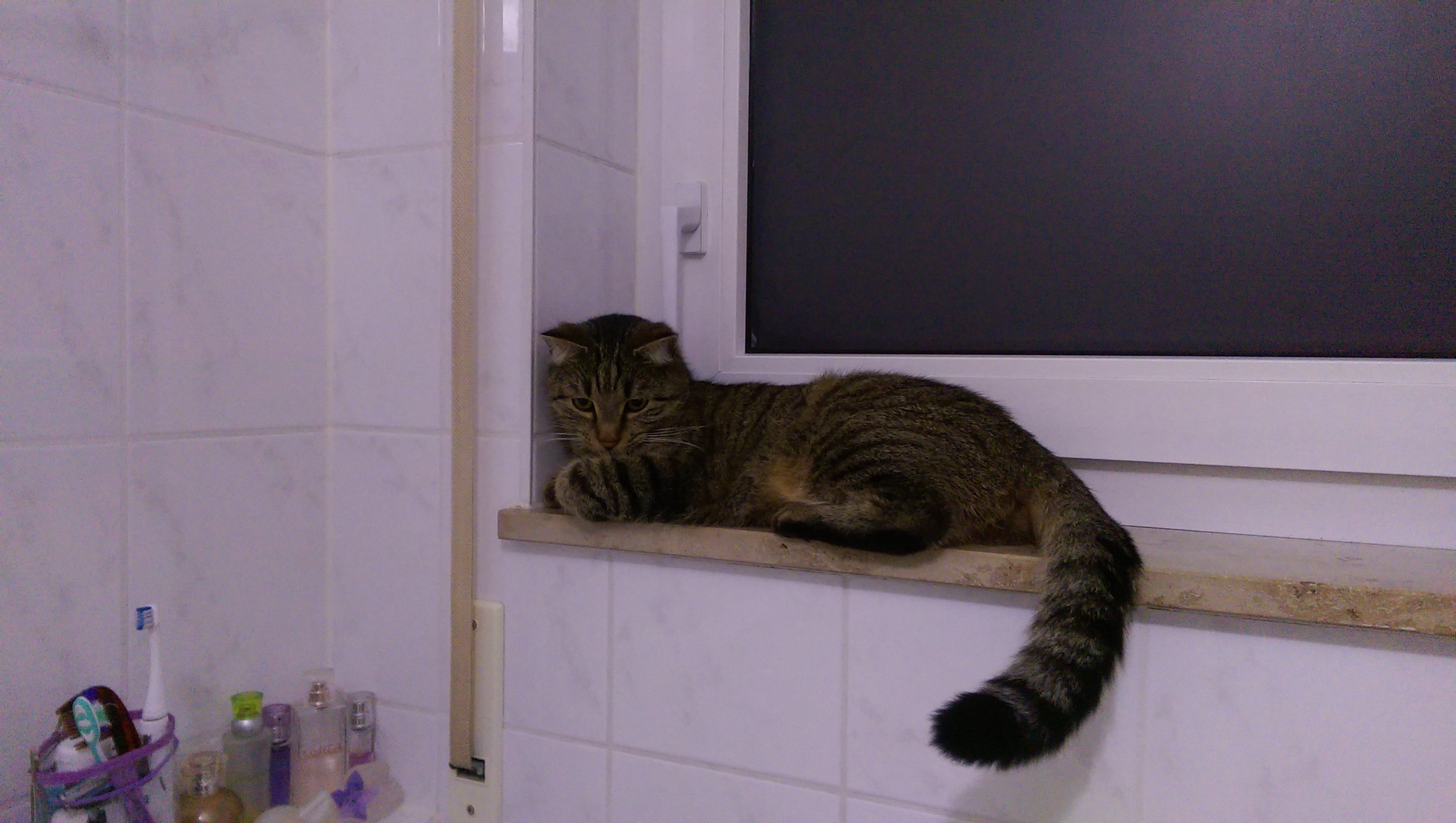-
Posts
5692 -
Joined
-
Last visited
Reputation Activity
-

-
 Werner reacted to SteeMan in No post after upgraded to 26.2.0-trunk.62
Werner reacted to SteeMan in No post after upgraded to 26.2.0-trunk.62
But it is that extra money that is paying for the better support after the sale that you see in the RaspPi ecosystem. All the other SBC vendors compete on low price and can't afford to provide any support after the sale and rely on open source volunteers to provide their long term support.
-
 Werner reacted to rpardini in Hard Brick After Failed Armbian Upgrade (Jammy to Noble)
Werner reacted to rpardini in Hard Brick After Failed Armbian Upgrade (Jammy to Noble)
From https://github.com/armbian/build/pull/5056#issuecomment-1529793978
-
 Werner reacted to c0rnelius in Low performance on N2 if kernel version 6.17+
Werner reacted to c0rnelius in Low performance on N2 if kernel version 6.17+
https://lore.kernel.org/linux-amlogic/20251127170908.14850-1-18255117159@163.com/T/#t
https://lore.kernel.org/linux-amlogic/176397825606.3590190.10935817124468233062.b4-ty@linaro.org/T/#t
-
 Werner got a reaction from Ghoelian in State of support for Raspberry Pi 5
Werner got a reaction from Ghoelian in State of support for Raspberry Pi 5
When support for Raspberry Pis has been added there was no model 5 yet. With the intention to only support the flagship the board configuration was added as rpi4b.conf. Since then support was extended across all models from 3 and up. However renaming a board config file is an issue. I already had the idea to address that but gave up on it: https://github.com/armbian/build/pull/7881
tl;dr: rpi4b image will work on all models from 3 to 5. https://www.armbian.com/rpi4b/
-
 Werner got a reaction from laibsch in Check and fix filesystem
Werner got a reaction from laibsch in Check and fix filesystem
No. This fork uses the name Armbian without permission and they do not contribute to the core development process. Instead they trick you into thinking that you'd get any sort of support here at our place whatsoever.
-
 Werner got a reaction from dale in NanoPC-T4, rk3399, after the update `efi_free_pool: illegal free 0x00000000f0f09040`
Werner got a reaction from dale in NanoPC-T4, rk3399, after the update `efi_free_pool: illegal free 0x00000000f0f09040`
not recommended for rockchip socs since it cannot handle the rather high baud rate of 1.5Mbaud. Use FT232, CH340 or CP2104 instead.
-
 Werner got a reaction from lucass in Does the Orange Pi 6 Plus NPU work natively with Ollama, or do models need conversion? Also, experiences running larger LLMs with its high RAM?
Werner got a reaction from lucass in Does the Orange Pi 6 Plus NPU work natively with Ollama, or do models need conversion? Also, experiences running larger LLMs with its high RAM?
Armbian does not have a config for this board nor is it supported in some way.
-
 Werner got a reaction from dale in Board Bring-up Youyeetoo YY3568 RockChip RK3568
Werner got a reaction from dale in Board Bring-up Youyeetoo YY3568 RockChip RK3568
The rk3588 soc has a fixed boot order which is spi, emmc, microsd, other I think. So if there is a boot loader found on spi it will ignore other options and try to boot from that.
While Armbian uboot binaries on spi are instructed to check if there is a microsd card inserted and boot from that, vendors can (ab)use this circumstance to make it harder for other operation systems being used because tools like rkdevtool are necessary to get rid of it. If the spi is pre-flashed with crap, I guess that's why the step is necessary.
-
 Werner got a reaction from Hqnicolas in Board Bring-up Youyeetoo YY3568 RockChip RK3568
Werner got a reaction from Hqnicolas in Board Bring-up Youyeetoo YY3568 RockChip RK3568
The rk3588 soc has a fixed boot order which is spi, emmc, microsd, other I think. So if there is a boot loader found on spi it will ignore other options and try to boot from that.
While Armbian uboot binaries on spi are instructed to check if there is a microsd card inserted and boot from that, vendors can (ab)use this circumstance to make it harder for other operation systems being used because tools like rkdevtool are necessary to get rid of it. If the spi is pre-flashed with crap, I guess that's why the step is necessary.
-
 Werner reacted to BlackS in How to enter to u-boot enviroment ?
Werner reacted to BlackS in How to enter to u-boot enviroment ?
Hip hip hooray !!!
Yep, this way worked.
Will provide the all steps for people who have the same issue.
$ apt install linux-u-boot-rock-5b-edge $ armbian-install # Just in case I've installed to the all partitions. I mean to 5th and 7th. > 5 Install/Update the bootloader on SD card (/dev/mmcblk1) > 7 Install/Update the bootloader on MTD Flash $ reboot
And now I can enter to uboot shell
change to F2: 1068MHz ch0 ttot12 ch1 ttot12 ch2 ttot12 ch3 ttot12 change to F3: 1560MHz ch0 ttot14 ch1 ttot14 ch2 ttot14 ch3 ttot14 change to F0: 2112MHz ch0 ttot16 ch1 ttot16 ch2 ttot16 ch3 ttot16 out U-Boot SPL 2024.04-armbian-2024.04-S830c-P0000-Hd72c-Vdfa5-Bb703-R448a (Oct 24 2025 - 02:33:30 +0000) Trying to boot from SPI ## Checking hash(es) for config config-1 ... OK ## Checking hash(es) for Image atf-1 ... sha256+ OK ## Checking hash(es) for Image u-boot ... sha256+ OK ## Checking hash(es) for Image fdt-1 ... sha256+ OK ## Checking hash(es) for Image atf-2 ... sha256+ OK ## Checking hash(es) for Image atf-3 ... sha256+ OK INFO: Preloader serial: 2 NOTICE: BL31: v2.3():v2.3-868-g040d2de11:derrick.huang, fwver: v1.48 NOTICE: BL31: Built : 15:02:44, Dec 19 2024 INFO: spec: 0x1 INFO: code: 0x88 INFO: ext 32k is not valid INFO: ddr: stride-en 4CH INFO: GICv3 without legacy support detected. INFO: ARM GICv3 driver initialized in EL3 INFO: valid_cpu_msk=0xff bcore0_rst = 0x0, bcore1_rst = 0x0 INFO: l3 cache partition cfg-0 INFO: system boots from cpu-hwid-0 INFO: disable memory repair INFO: idle_st=0x21fff, pd_st=0x11fff9, repair_st=0xfff70001 INFO: dfs DDR fsp_params[0].freq_mhz= 2112MHz INFO: dfs DDR fsp_params[1].freq_mhz= 528MHz INFO: dfs DDR fsp_params[2].freq_mhz= 1068MHz INFO: dfs DDR fsp_params[3].freq_mhz= 1560MHz INFO: BL31: Initialising Exception Handling Framework INFO: BL31: Initializing runtime services WARNING: No OPTEE provided by BL2 boot loader, Booting device without OPTEE initialization. SMC`s destined for OPTEE will return SMC_UNK ERROR: Error initializing runtime service opteed_fast INFO: BL31: Preparing for EL3 exit to normal world INFO: Entry point address = 0xa00000 INFO: SPSR = 0x3c9 ns16550_serial serial@feb50000: pinctrl_select_state_full: uclass_get_device_by_phandle_id: err=-19 U-Boot 2024.04-armbian-2024.04-S830c-P0000-Hd72c-Vdfa5-Bb703-R448a (Oct 24 2025 - 02:33:30 +0000) Model: Radxa ROCK 5 Model B DRAM: 16 GiB Core: 353 devices, 32 uclasses, devicetree: separate MMC: mmc@fe2c0000: 1, mmc@fe2d0000: 2, mmc@fe2e0000: 0 Loading Environment from SPIFlash... SF: Detected xt25f128 with page size 256 Bytes, erase size 4 KiB, total 16 MiB *** Warning - bad CRC, using default environment In: serial@feb50000 Out: serial@feb50000 Err: serial@feb50000 Model: Radxa ROCK 5 Model B rockchip_dnl_key_pressed: no saradc device found Net: No ethernet found. Hit any key to stop autoboot: 0 =>
Great
Thanks a lot
-

-
 Werner got a reaction from nom in Cannot get m2 sata adapter to work ASM1166
Werner got a reaction from nom in Cannot get m2 sata adapter to work ASM1166
I think this is wrong. The overlay needs to enabled if there is an m2 sata ssd connected. However in this case we connect a pcie device which connects to a chip that multiplexes the sata devices. tl;dr: try disabling this overlay
-

-
 Werner got a reaction from Jojo in Odroid M1S Image Planned ?
Werner got a reaction from Jojo in Odroid M1S Image Planned ?
Yes. In the past everything was added as patch. The problem was (and still is for other reasons) that some patches modifying a dt build on top of each other or stuff breaks. Now the dt can be edited directly and using git blame it is documented who edited what for whatever reason.
Of course sometimes there is an almost perfect dt upstream that needs minor adjustments. Those can be perfectly fine done with a patch.
Also both patches and our dt files only stay for as long as there is no proper equivalent upstream. Once everything is in mainline they are no longer needed.
-
 Werner reacted to SteeMan in Can't flash Armbian to EMMC on Orange Pi 5B
Werner reacted to SteeMan in Can't flash Armbian to EMMC on Orange Pi 5B
I don't think you understand how Armbian works. This board is community supported. It does not and hasn't been an Armbian supported board. Given the hundreds of boards out there Armbian only has the resources to officially support a handful. The rest end up being supported by the user community like this board. Thus support is only as good as the community volunteers who have the board and wish to volunteer their time to support it. Armbian provides the tools and infrastruction to make supporting boards easier, but the work still needs to be done by someone for community supported boards like this.
-
 Werner got a reaction from Mikhail M in working with the orange Pi 3B
Werner got a reaction from Mikhail M in working with the orange Pi 3B
Armbian does not come with some sort of admin console. Please elaborate.
Try different patch cable.
moved
-
 Werner got a reaction from ThreeNamesGrace in Miminal specs for armbian with desktop GUI
Werner got a reaction from ThreeNamesGrace in Miminal specs for armbian with desktop GUI
It seems like there is a mix-up between specs for the framework and for the OS. A lightweight desktop can run on 512MB, yes but probably not much fun, depending on applications. Won't recommend running a web browser.
I'd probably get some existing cheap sbcs with similar specs and play with them to elaborate if the performance is sufficient.
-
 Werner reacted to macmania in youyeetoo r1 RK3588S Mali-G610 gpu support ?
Werner reacted to macmania in youyeetoo r1 RK3588S Mali-G610 gpu support ?
Everything worked fine, even tried some ffmpeg for hardware decode
-
 Werner got a reaction from robnielsen in Armbian_25.8.2_Orangepi5_noble_current_6.12.49.img.xz fails to boot
Werner got a reaction from robnielsen in Armbian_25.8.2_Orangepi5_noble_current_6.12.49.img.xz fails to boot
moved.
All boards using rk3588/s soc most likely work best with either vendor or edge kernel. Current has limited functionality since when this kernel became LTS only basic support was there. All further enhancements regarding hardware featureless were upstreamed later.
-
 Werner got a reaction from cruger- in Rock 5 ITX as Multi-purpose App server
Werner got a reaction from cruger- in Rock 5 ITX as Multi-purpose App server
As expected. Mainline Linux support for rk35xx soc family is still under heavy development. There is a good overview what should work and what does not:https://gitlab.collabora.com/hardware-enablement/rockchip-3588/notes-for-rockchip-3588/-/blob/main/mainline-status.md
-
 Werner reacted to royk in sata overlay for Linux 6.16.10
Werner reacted to royk in sata overlay for Linux 6.16.10
@Werner I agree that it's more convenient for everyone, but it took me some time to find out how and testing it in an image.
https://github.com/armbian/build/pull/8707/commits
-
 Werner got a reaction from laibsch in sata overlay for Linux 6.16.10
Werner got a reaction from laibsch in sata overlay for Linux 6.16.10
It would make more sense to send a PR to fix this so it is included in all upcoming images/releases.
-
 Werner got a reaction from 0jay in Sep 23, 2025 OMV Build for Rpi Broken..?
Werner got a reaction from 0jay in Sep 23, 2025 OMV Build for Rpi Broken..?
Have you tried to get into by keyboard/hdmi or serial console? If so you could track down why sshd refuses to start
-
 Werner reacted to hexdump in Amlogic S905X -- Cannot install Armbian to internal eMMC
Werner reacted to hexdump in Amlogic S905X -- Cannot install Armbian to internal eMMC
@pochopsp - you can buy two tv-boxes of the same type at once from the same seller and they might have different hardware internally still - that is the reason why it is not prossible to provide really good images for tv boxes: the hardware is simply too random and often also low quality








